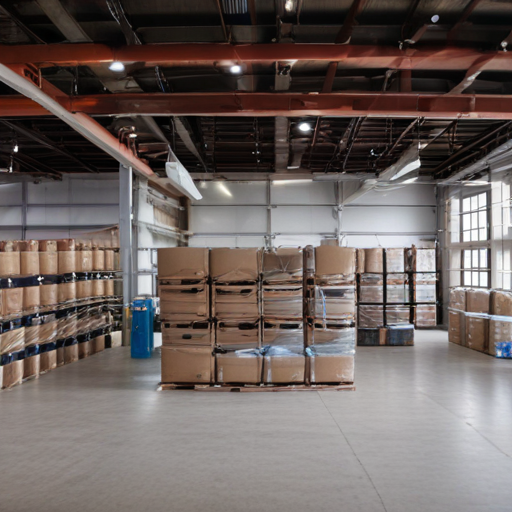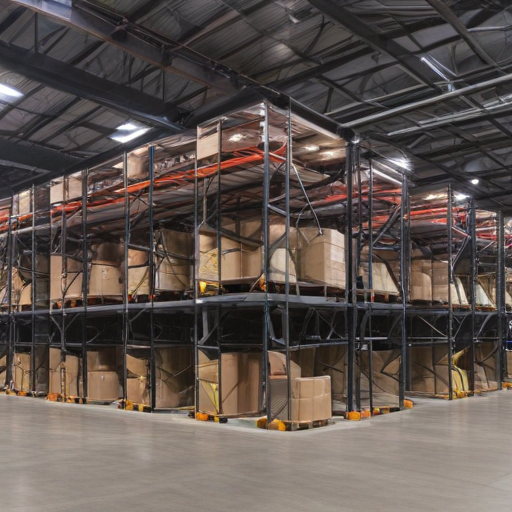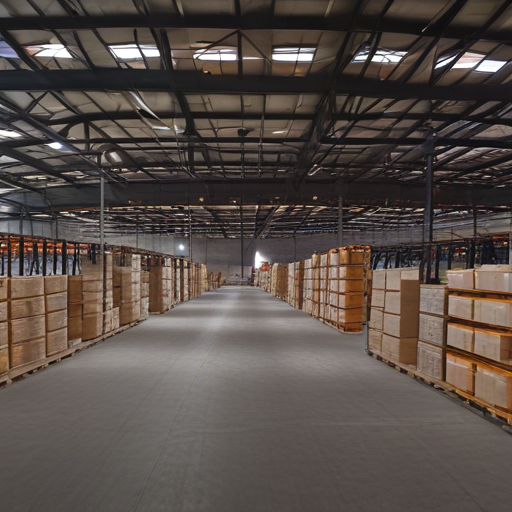Future Warehouse
Introduction
Welcome to the future of warehousing in America! In an era where technology is advancing at an unprecedented pace, it’s no surprise that warehouses are also evolving to keep up with the demands of modern business. From automated robots gliding through towering racks to artificial intelligence systems orchestrating efficient inventory management, the warehouse of tomorrow promises a world of possibilities. Join us as we explore the exciting developments and factors that will shape this futuristic landscape. Get ready to step into a realm where innovation meets efficiency, as we delve into the fascinating world of future warehouses in America!
The Future of Warehouses in America

Warehouses are evolving at a rapid pace, and the future holds exciting possibilities for these crucial hubs of commerce. Technological advancements and shifting consumer demands are driving significant changes in the way warehouses operate. Let’s take a closer look at what lies ahead for the future warehouse in America.
One key trend that will shape the future of warehouses is automation. With advancements in robotics and artificial intelligence, we can expect to see more automated processes within warehouses. This includes autonomous vehicles for material handling, robotic picking systems, and smart inventory management systems.
Another factor influencing warehouse design is sustainability. As companies become increasingly conscious of their environmental impact, green initiatives will play a vital role in shaping warehouse operations. From energy-efficient lighting to solar panels and rainwater harvesting systems, sustainable practices will be integrated into every aspect of warehouse infrastructure.
Furthermore, e-commerce giants like Amazon have raised customer expectations regarding speedy delivery times. To meet this demand, warehouses must be strategically located near urban centers to enable faster order fulfillment. As cities continue to expand with growing populations, finding suitable locations close to consumers will become even more critical.
In addition to location considerations, technology-driven solutions such as drones and delivery robots may soon revolutionize last-mile logistics. These innovations have the potential to reduce costs while increasing efficiency and convenience for both businesses and customers alike.
Moreover, data analytics will play an essential role in optimizing warehouse operations. By harnessing vast amounts of information generated by sensors throughout the supply chain network, companies can gain valuable insights into inventory management patterns and make data-driven decisions that improve overall efficiency.
In conclusion (not conclusive), the future warehouse landscape promises increased automation through robotics and AI technologies; sustainable practices embedded into operations; strategic location planning near urban areas; innovative last-mile solutions using drones or robots; as well as leveraging data analytics for optimized performance across all aspects of warehousing operations.
Factors That Will Affect the Future of Warehouses in America

Factors That Will Affect the Future of Warehouses in America
- Technological Advancements: The future of warehouses in America will be greatly influenced by advancements in technology. Automation, robotics, and artificial intelligence are already revolutionizing warehouse operations, making them more efficient and cost-effective. With the constant development of new technologies, we can expect to see even greater integration of these tools into warehouse processes.
- E-commerce Boom: The rise of e-commerce has significantly impacted the warehousing industry and will continue to do so in the future. As online shopping becomes increasingly popular, warehouses need to adapt to handle higher order volumes and faster delivery times. This could lead to the construction of larger fulfillment centers strategically located near major population centers.
- Sustainability Initiatives: Environmental concerns are growing worldwide, and this trend is likely to shape the future of warehouses as well. Companies will need to implement sustainable practices such as energy-efficient lighting systems, solar panels for power generation, waste management solutions, and reducing carbon emissions from transportation.
- Changing Consumer Expectations: Today’s consumers have come to expect fast shipping options like same-day or next-day delivery. To meet these expectations, warehouses must adopt innovative strategies such as micro-fulfillment centers or last-mile hubs located closer to urban areas.
- Workforce Transformation: The workforce within warehouses is also evolving due to various factors including automation technologies mentioned earlier. Warehouse employees may require different skill sets in the future as they work alongside robots or operate advanced machinery requiring technical expertise.
In conclusion…
The future of warehouses in America is undoubtedly exciting with technological advancements driving efficiency gains while meeting changing consumer demands for speed and convenience.
Conclusion
As we look to the future, it is clear that warehouses in America are undergoing a significant transformation. The advancements in technology, changes in consumer behavior, and the demand for faster and more efficient operations have all contributed to this evolution.
The future of warehouses will be shaped by automation, robotics, artificial intelligence, and data analytics. These technologies will enable warehouses to operate with greater speed, accuracy, and productivity. They will also allow for better inventory management and optimization of space utilization.
However, while technology plays a crucial role in shaping the future of warehouses, it is important not to overlook other factors that will impact their growth. Factors such as sustainability initiatives, rising labor costs, increased urbanization, and changing regulations will all play a part in shaping the warehouse landscape.
In addition to these external factors, companies themselves must adapt their strategies and operations to stay competitive in this rapidly evolving industry. This includes investing in training programs for employees to understand how new technologies work or implementing processes that improve efficiency throughout the supply chain.
The warehouse of the future will be an interconnected network with seamless integration between different systems. It will leverage cutting-edge technology to optimize operations while still prioritizing sustainability and meeting customer demands.
While it is impossible to predict every aspect of what our future warehouses may look like with certainty one thing remains clear – they are set on a path towards innovation that promises enhanced efficiency and improved customer satisfaction.
So buckle up because exciting times lie ahead! The warehouse industry is poised for transformative change as we embrace new technologies and strategies aimed at delivering goods faster than ever before!

